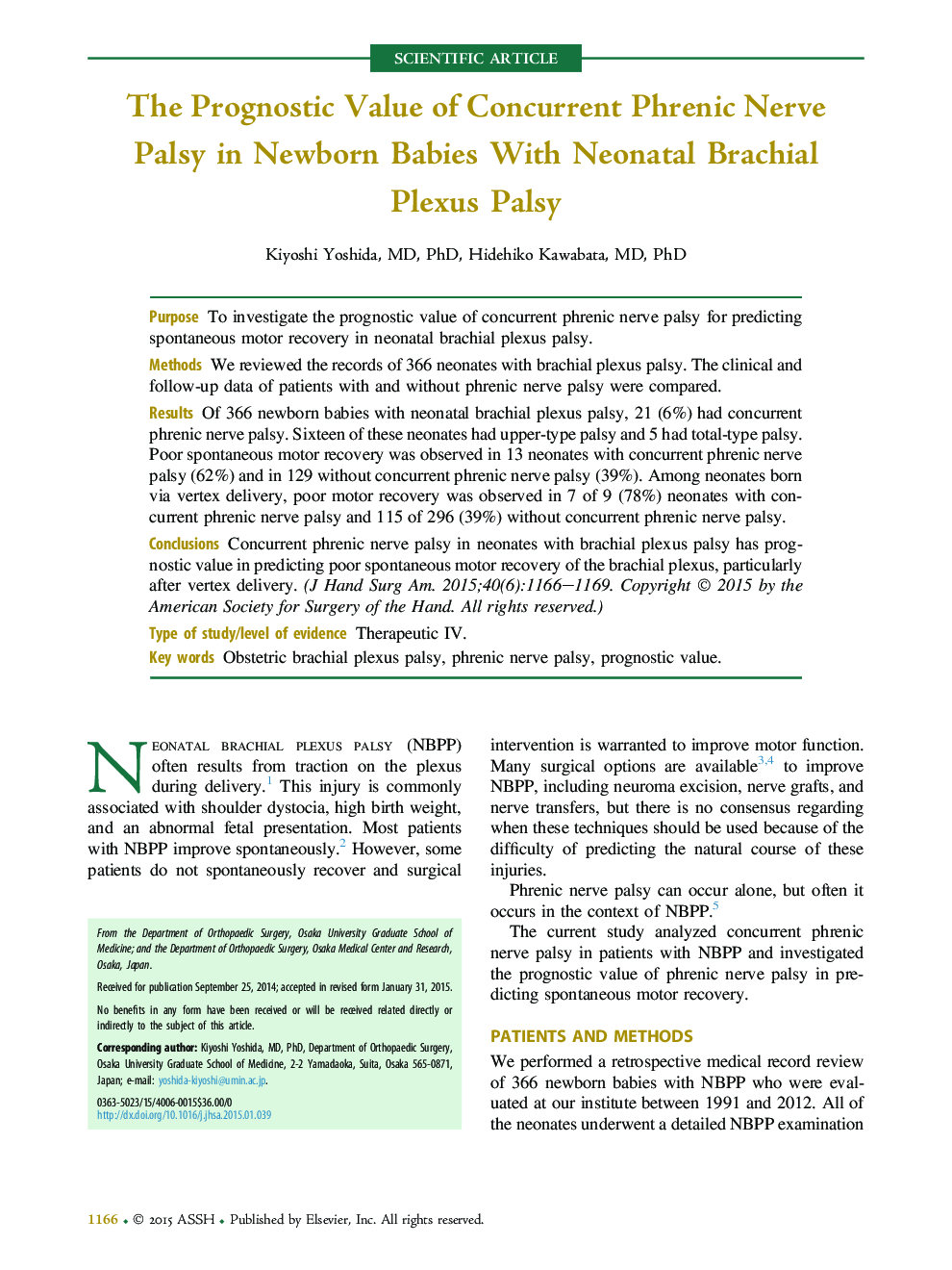| Article ID | Journal | Published Year | Pages | File Type |
|---|---|---|---|---|
| 4066724 | The Journal of Hand Surgery | 2015 | 4 Pages |
PurposeTo investigate the prognostic value of concurrent phrenic nerve palsy for predicting spontaneous motor recovery in neonatal brachial plexus palsy.MethodsWe reviewed the records of 366 neonates with brachial plexus palsy. The clinical and follow-up data of patients with and without phrenic nerve palsy were compared.ResultsOf 366 newborn babies with neonatal brachial plexus palsy, 21 (6%) had concurrent phrenic nerve palsy. Sixteen of these neonates had upper-type palsy and 5 had total-type palsy. Poor spontaneous motor recovery was observed in 13 neonates with concurrent phrenic nerve palsy (62%) and in 129 without concurrent phrenic nerve palsy (39%). Among neonates born via vertex delivery, poor motor recovery was observed in 7 of 9 (78%) neonates with concurrent phrenic nerve palsy and 115 of 296 (39%) without concurrent phrenic nerve palsy.ConclusionsConcurrent phrenic nerve palsy in neonates with brachial plexus palsy has prognostic value in predicting poor spontaneous motor recovery of the brachial plexus, particularly after vertex delivery.Type of study/level of evidenceTherapeutic IV.
